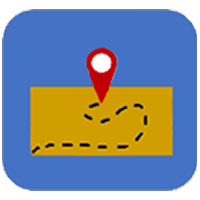Landscape Analysis
View article.
The Nature Conservancy and the Forest Service, Department of Agriculture have long-term goals to reintroduce fire into U.S. ecosystems at ecologically relevant spatial and temporal scales. Building on decades of collaborative work, a Master Participating Agreement was signed in March 2017 to increase overall fire management capacity through training and education. In October 2017, The Nature Conservancy hosted a cross-boundary fire training, education, research, and restoration-related event for 2 weeks at Sycan Marsh Preserve in Oregon. Eighty people from 15 organizations applied prescribed fire on over 1,200 acres (490 ha). Managers and scientists participated
in the applied learning and training exercise. The exercise was a success; operational and research objectives were met, as indicated by multiagency, multidisciplinary fire research, and effectiveness monitoring. This paper describes a paradigm shift of fire-adapted, cross-boundary, multiagency landscape-scale restoration. Participants integrated adaptive management and translational ecology so that applied controlled burning incorporated
the most up-to-date scientifically informed management decisions. Scientists worked with practitioners to advance their understanding of the challenges being addressed by managers. The model program has stimulated an exponential increase in landscape scale and ecologically relevant dry forest restoration in eastern Oregon. Collaboration between managers and scientists is foundational in the long-term success of fire-adapted restoration. Examples of effects of prescribed fire on ecosystem services in the project area, such as increased resilience of trees in drought years, are also provided.
Webinar recording.
Description: Rangelands produce ecosystem services that not only support biodiversity and wildlife, but also sustain livestock operations and rural economies. Woody encroachment is a threat to rangeland productivity, but its impact is often overlooked due to its slow pace and the positive public perception of trees. The Rangeland Analysis Platform (RAP) is an innovative online tool that combines current and historical satellite imagery with thousands of on-the-ground vegetation measurements to facilitate an exploration of trends in western vegetation over time. Using RAP’s recently developed remotely sensed products of rangeland production, we quantify the amount of forage lost to woody encroachment across western rangelands over the past three decades. Translating these losses into dollars, we demonstrate how this knowledge can be integrated into area-wide planning to stop further economic loss and prevent wholescale ecosystem transitions.
Presenters: Brady Allred (University of Montana) and Dirac Twidwell (University of Nebraska-Lincoln).
View factsheet.
Timing is everything, especially when it comes to the complex ecological interactions between plants and the environment. For range managers concerned with maintaining the integrity and productivity of rangelands, it is critical to monitor the seasonal development and condition of grasses and other vegetation on which cattle graze. PhenoMap is a new Web-based tool that managers can use to assess the production and location of high quality forage. It uses satellite imagery to address the need for near-real-time information about plant life cycle events over large spatial areas.
PhenoMap is a new Web-based tool that managers can use to assess the production and location of high-quality forage. It uses satellite imagery to address the need for near-real-time information about plant life cycle events over large spatial areas. “This remote sensing tool can help prioritize management of rapidly degrading resources across the landscape, in near real time,” says Nancy Grulke, a PNW research ecologist with the project. “Tracking resource quality from week to week with imagery can not only support management decisions with empirical evidence, but also provide a visual tool for communication with landowners.”
Access Western Migrations Tool
In 2018, the U.S. Geological Survey assembled a Corridor Mapping Team to assist western states in mapping bison, elk, moose, mule deer, and pronghorn corridors using existing GPS data. One outcome of the team is this mapping tool, which provides public access to data on migrating ungulates through a unique partnership between participating western states. This tool enables viewing of mapped migration corridors, routes, stopovers and ranges. Choices for base maps include land cover and land management. In addition, users can add their own zipped ArcGIS shapefile to the viewer through the “Add Data” button. Email user questions to: westernmigrations@uwyo.edu.
View article.
This study showed that all models provided higher predictive accuracy than chance, with an average AUC across the 20 forage species of 0.84 for distal and proximal variables and 0.81 for proximal variables only. This indicated that the addition of distal variables improved model performance. We validated the models using two independent datasets from two regions of Idaho. We found that predicted forage species occurrence was on average within 10% of observed occurrence at both sites. However, predicted occurrences had much less variability between habitat patches than the validation data, implying that the models did not fully capture fine-scale heterogeneity. We suggest that future efforts will benefit from additional fine resolution (i.e., less than 30 m) environmental predictor variables and greater accounting of environmental disturbances (i.e., wildfire, grazing) in the training data. Our approach was novel both in methodology and spatial scale (i.e., resolution and extent). Our models can inform ungulate nutrition by predicting the occurrence of forage species and aide habitat management strategies to improve nutritional quality.
This study modelled 20 forage species that are suitable for mule deer and Rocky Mountain elk. Climatic, topographic, soil, vegetation, and disturbance variables were attributed to approximately 44.3 million habitat patches generated using multi-scale object-oriented image analysis. Lasso logistic regression was implemented to produce predictive SDMs. The study evaluated if the inclusion of distal environmental variables (i.e., indirect effects) improved model performance beyond the inclusion of proximal variables (i.e., direct physiological effect) only. Results showed that all models provided higher predictive accuracy than chance, with an average AUC across the 20 forage species of 0.84 for distal and proximal variables and 0.81 for proximal variables only. This indicated that the addition of distal variables improved model performance. The study validated the models using two independent datasets from two regions of Idaho and found that predicted forage species occurrence was on average within 10% of observed occurrence at both sites.
Webinar recording.
In this webinar, RMRS research ecologist Sean Healey will discuss improved techniques for mapping forest disturbance and recovery across the United States with remotely sensed data.
View article.
In recent decades, many bumble bee species have declined due to changes in habitat, climate, and pressures from pathogens, pesticides, and introduced species. The western bumble bee (Bombus occidentalis), once common throughout western North America, is a species of concern and will be considered for listing by the U.S. Fish and Wildlife Service (USFWS) under the Endangered Species Act (ESA). We attempt to improve alignment of data collection and research with USFWS needs to consider redundancy, resiliency, and representation in the upcoming species status assessment. We reviewed existing data and literature on western bumble bee, highlighting information gaps and priority topics for research. Priorities include increased knowledge of trends, basic information on several life‐history stages, and improved understanding of the relative and interacting effects of stressors on population trends, especially the effects of pathogens, pesticides, climate change, and habitat loss. An understanding of how and where geographic range extent has changed for the two subspecies of western bumble bee is also needed.






